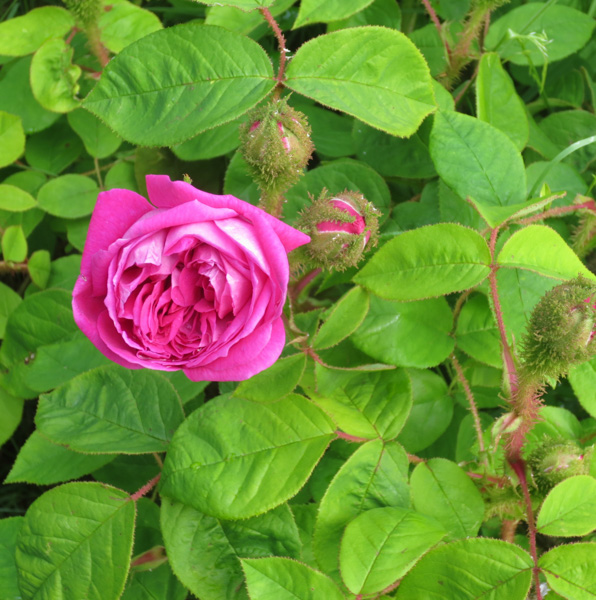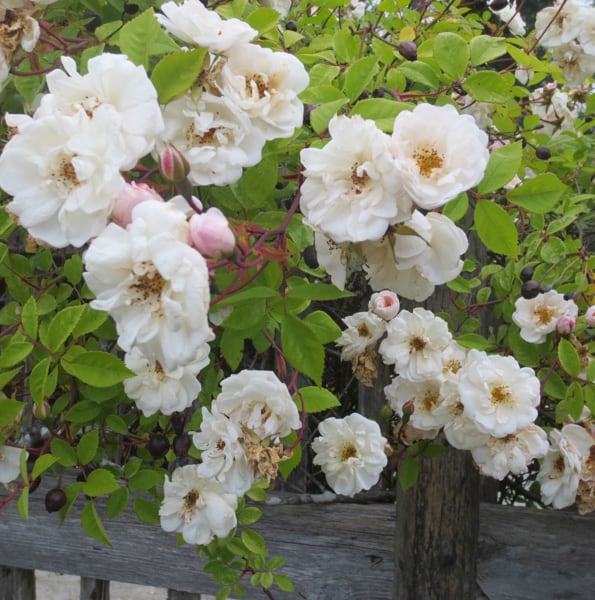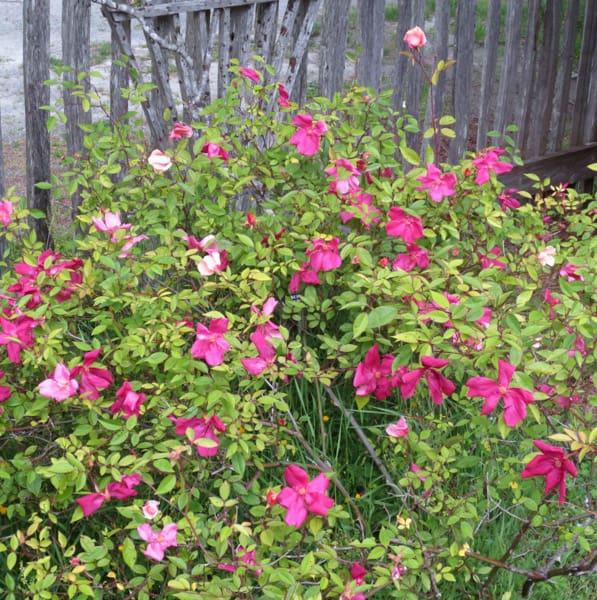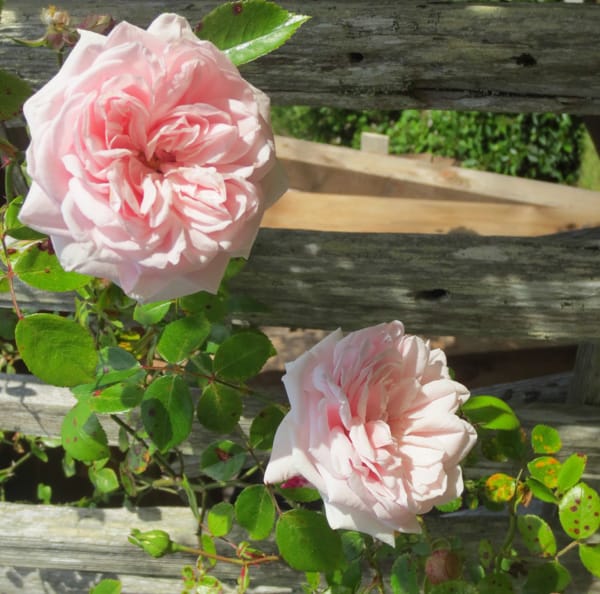OLD ROSES – LIVING HISTORY
The Heritage Garden at the Cortes Island Museum
In June, the Heritage Garden is filled with scent and colour as the Old Roses come into bloom. Some of these roses bloom just once a season for a generous time. Others have a main bloom in June and also bloom at intervals over the summer. Old Roses have enduring popularity with their beautiful colours, flower forms and scent. One of the blue benches by the apple trees in the Heritage Garden is a very pleasant place to sit and appreciate the colours and fragrances in June.
Here are the seven Old Roses in the Heritage Garden.
Moss Rose
Most different varieties of this type of rose were introduced in France and were popular in the 1800s. They bloom once in June and the shrub in the Heritage Garden has vivid deep rose flowers that are highly scented and make good cut flowers. The rose is 5’ (1.5 m) tall on lax, prickly stems, and the buds have a covering of fragrant thin hairs (the moss) which is slightly sticky and fragrant. Moss roses are highly disease resistant and the leaves stay attractive all season.
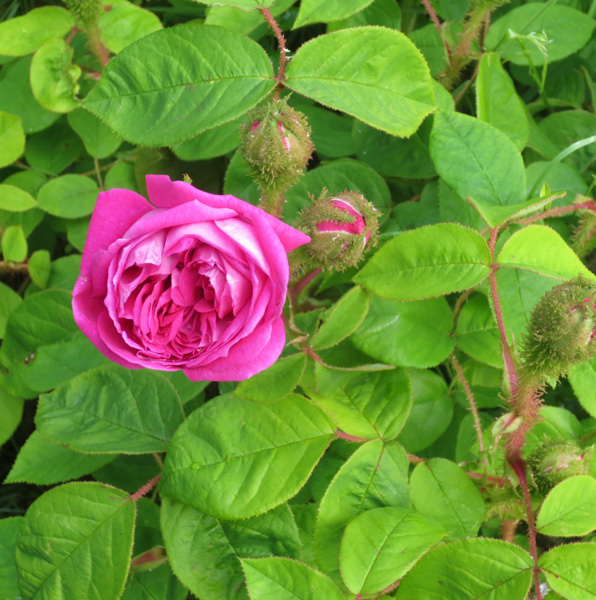
Ghislaine de Felingonde
A Rambler raised in France and introduced in 1916. The clustered flowers are double and range in colour from yellow to pale orange with some scent. The main bloom is followed by some fewer flowers at intervals later in the season. The stems are almost thornless and grow to about 10’ (3 m).
Felicite et Perpetue
A Rambler which produces large clusters of small double white flowers with a light scent once a season on thorny stems up to 15’ (4.5 m). The blooms have distinctive pink buds. This rose was introduced in 1827 in France and was named after the daughters of the rose breeder A. Jacques.
Mutabilis
This old China rose was known from the late 1800s in Europe. It forms a loose branched bush of about 5’ (1.5 m) and is covered with masses of single flowers with little scent all season. The flowers open pale apricot then become shades of pink, looking like a flock of coloured butterflies. A healthy, disease resistant rose which likes a sheltered location.
Blanc Double de Coubert
This Rugosa rose was introduced in 1892 in France and forms a shrub up to 6’ (1.8 m) with prickly stems. The flowers are loosely double, showing golden stamens and have an excellent scent which can perfume an area of the garden. The blooms appear in flushes over the course of the summer. The slightly wrinkled leaves typical of Rugosas are very healthy.
Dr. W. Van Fleet
This Climber was raised by Dr. Walter Van Fleet in Tennessee about 1890 and introduced in 1910. The pale pink blooms are fully double in clusters with a very good scent and bloom once a season for an extended time. The leaves are glossy and this climber has thorny stems growing to 15’ (4.5 m).
Awakening
This Climber was discovered in Czechoslovakia (former) by Jan Bohm in 1935. ‘Awakening’ is a sport (genetic mutation) of Rose ‘New Dawn’ (1930) which is in turn a sport of Rose ‘Dr.W.Van Fleet’. The rose is about 10’ (3 m) in height with thorny stems and glossy leaves.The pale pink blooms are double and fully quartered and very fragrant. This rose blooms in June and then repeat blooms through the season.

